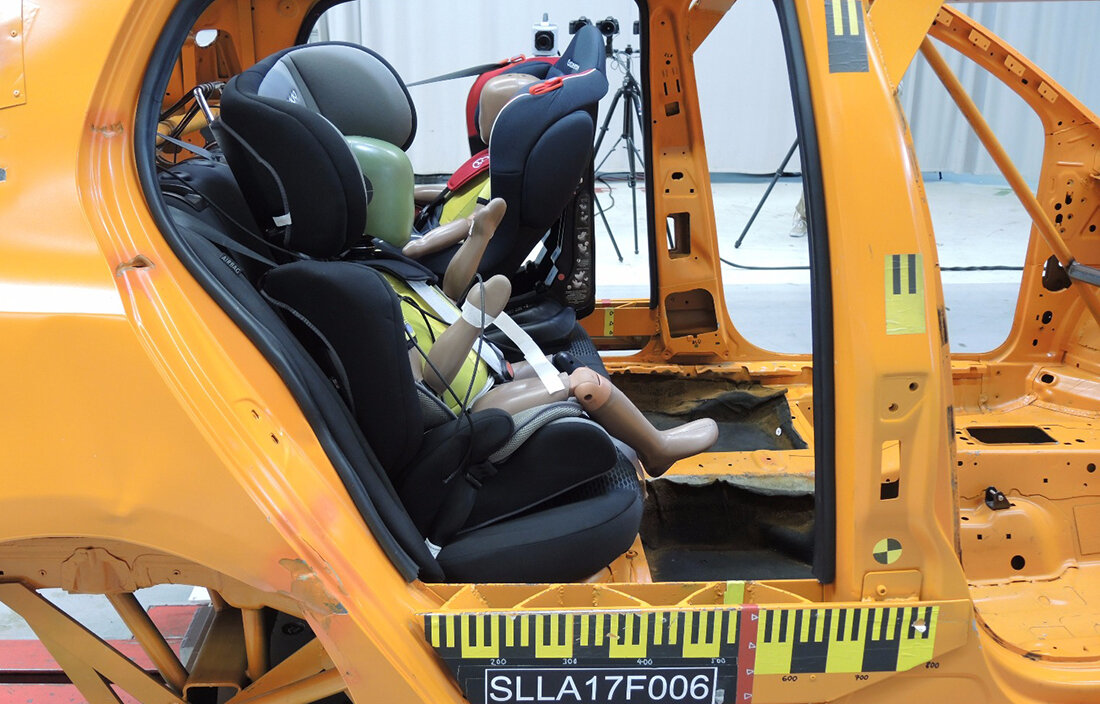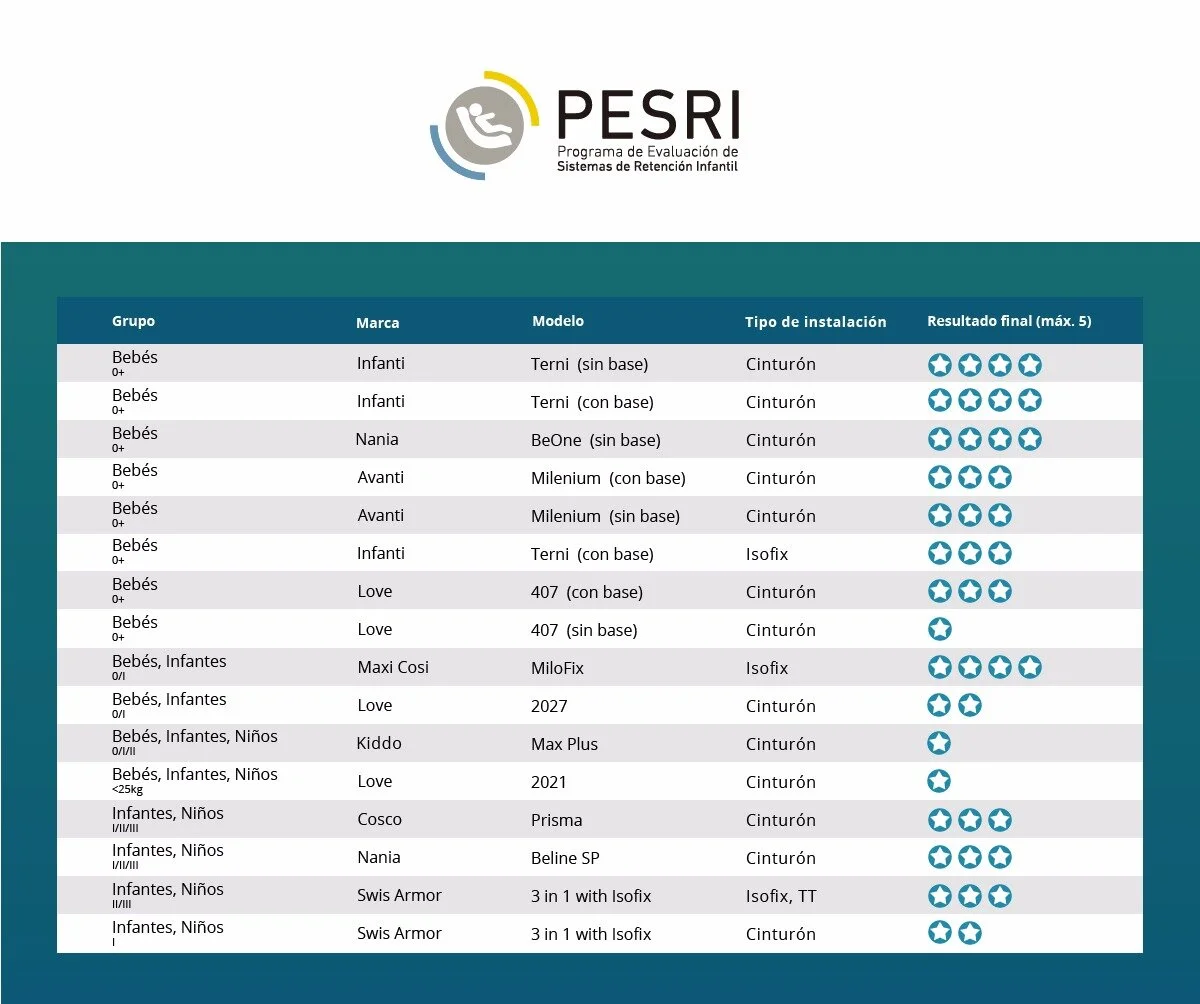New CRS Tests Results For Latin America Region
A new round of results of the Latin American Child Restraint Systems Evaluation Programme, PESRI, was released today with the safety performance of 11 Child Restraint Systems (CRS) models sold in Latin America region.
PESRI aims to raise awareness amongst consumers on the relevance of CRS use, generate consumer information on safety performance and deliver input for the Latin NCAP reference list. Each CRS is subjected to a series of tests, ranging from performance in frontal and side impact tests, to ease of use, resulting in a star rating score. The testing result allows the consumer to make an informed decision when buying a CRS.
2018 Results
Overall results are generally in line with previous years, and confirm that multigroup seats are often a compromise and CRS dedicated to a single mass group tend to perform better when it comes to safety. Three baby shells and a convertible seat got the best star rating of the year with a 4 star overall score (Nania BeOne, Maxi Cosi MilloFix and Infanti Terni). Several CRS offer no or insufficient protection in side- impacts; side wings are not sufficiently dimensioned and/or padding material is absent. User instructions are a point of attention as correct use of the seat determines the level of protection. Multi-group CRS -especially those combining rearward and forward facing transport- can be bulky and not easy to install due to size and different, complicated belt routes. There were three CRS that broke of failed during the test which is not desirable and concerning (the harness of the Love 2021 in forward facing position, Kiddo Max Plus using it in rear facing position and the ISOFIX anchorage of the Swiss Armor 3 in 1). Among them one CRS’s harness teared off during the impact, other CRS ISOFIX anchorage failed during the test and a third one got released from the seatbelt due to poor routing. At least three CRSs offered low side impact protection. CRS consumer tests like PESRI are very relevant especially in regions where CRS use rate is low and governmental regulations still need a lot of development.
Recommendations
For consumers, to encourage rearward facing transport of children in CRS, also for toddlers. For governments of the region, to introduce UN R129 in Latin American legislation as alternative alongside R44; speed up introduction of Latch/ISOFIX seats and anchorage points in cars; Children below 1.5m height must always ride in a CRS appropriate to its size. Moreover to call for improved frontal impact protection; CRS should be able to cope with a Latin NCAP type of crash-severity, although there are more severe than legally required, especially in side impact protection. Finally to CRS and car manufacturers to improve ease of use: installation in car, simple belt route, harness adjustments, preferable one hand operation.
About PESRI
The Latin American Child Restraint Systems Evaluation Programme (PESRI) is a multi-stakeholder partnership working to achieve the UN’s road safety Global Goals, by providing parents in Latin America with an independent assessment of some of the most commonly available CRS. Partners in the programme include Global NCAP, ICRT, Fundación Gonzalo Rodriguez (Uruguay), ProTeste (Brazil), ODECU (Chile), El Poder del Consumidor (Mexico), and FIA Region IV.
The test setup remained unchanged compared to the 2013 – 2017 projects, allowing direct comparison of test results. CRS were tested in frontal and side impact as in the pre-2015 (European) ETC test. Bottom line is that children should benefit the same level of protection as adults and be able to survive accidents of Latin NCAP severity. Frontal tests were carried out in a VW Golf body on a test sled, using the NCAP pulse for that specific car, which means simulate a VW Golf series 7 crashing in the same conditions as the test performed by Latin NCAP. Side impact was also in the VW Golf body against a fixed ‘door’ (10º to direction of impact). Not all configurations were dynamically tested, generally only the most demanding ones. Ease of use was assessed by means of a checklist tailored to the Latin American situation.






